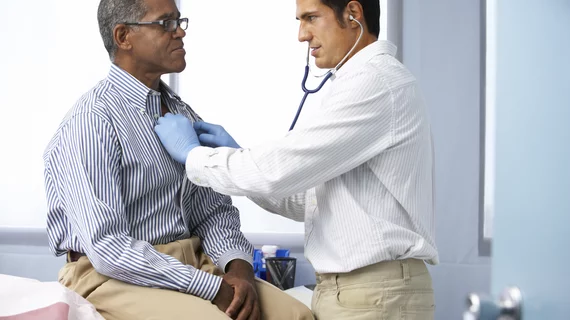Coronary computed tomography angiography (CTA) utilization has increased in recent years, and industry leaders have recommended it as a first-line test for the evaluation of stable coronary artery disease (CAD). According to a new analysis published in the Journal of the American Heart Association, however, some clinicians may be turning to coronary CTA when other strategies could lead to a better result.
“The overuse of coronary CTA may be a potentially significant health problem, considering the possibility of radiation hazard as well as increases in the number of downstream invasive cardiac procedures and CAD‐related costs,” wrote lead author Min Soo Cho, MD, department of cardiology at Asan Medical Center in Seoul, Korea, and colleagues. “Particularly, in asymptomatic patients, unnecessary use of coronary CTA could have a negative net effect if the overall benefits by the coronary CTA are not readily apparent.”
To explore this potential issue, the authors performed an observational study that included nearly 40,00 patients with known CAD who underwent coronary CTA from January 2007 to December 2013. The CTA results revealed that 15.3% of those patients had obstructive CAD, including 23.7% of symptomatic patients and 9.3% of asymptomatic patients. Downstream invasive angiography was then performed in 10.3% of patients, and those procedures were deemed appropriate in 80.6% of symptomatic patients and just 7.9% of asymptomatic patients.
Also, the five-year rate of either death or a myocardial infarction was “significantly higher” in patients with obstructive CAD visible on coronary CTA than those without. However, the team found that “the incremental predictive value of obstructive CAD on CTA beyond the conventional risk score and clinical assessments was limited.”
The diagnostic yield of coronary CTA for revealing obstructive CAD, the team added, was "low."
“The central theme of our study includes the inappropriate use of coronary CTA among asymptomatic patients,” the authors wrote. “This increasing trend in the use of coronary CTA in asymptomatic patients might be an international phenomenon. This is not in agreement with current guidelines and is a much larger proportion than those included in other registries or trials of coronary CTA.”
The authors did note that their study had numerous limitations, including the fact that it was observational in nature. For this reason, they wrote, their findings “should be considered hypothesis-generating.”
At the end of the day, though, their work highlights why cardiologists should pay close attention moving forward when it comes to utilizing coronary CTA..
“The incremental use of coronary CTA in asymptomatic patients had led to increases in the rates of inappropriate diagnostic or therapeutic procedures without a substantial improvement in the prediction for death or MI,” the team concluded. “The decision‐making for performing coronary CTA, including assessment of clinical factors and symptoms, needs to be substantially improved to increase the diagnostic yield and clinical benefit of coronary CTA in contemporary clinical settings.”
The full analysis is available here.

